Let’s start with the question I know you’re all asking after reading the title: “why on Earth would somebody choose to go to Iran?”. For me, the answer is as strange as it is simple: “to stop my Mexican friend bothering me on Facebook“. With the gift of hindsight, however, there are much better reasons to visit Iran:
- Iranians (or Persians, as they like to be called) are probably the nicest people I’ve ever come across. I’m not exactly sure why they’re so nice, but if I had to guess, I’d say it’s down to a few key factors:
- Being a predominantly Muslim country, most people are required to make a pilgrimage to Mecca (known as The Hajj), so they have a great respect for travellers.
- They understand that the country doesn’t have a good reputation overseas, and are keen to overcome this.
- Being a fairly closed country with not too many tourists, they’re curious about foreigners and the outside world.
These factors, however, fail to accurately account for just how friendly and hospitable Persians are. Not only will they stop to talk to you in the street and ask you if you’re enjoying yourself; if you like Persian food (YES!); why you’re here; but they’ll actually run down the street to get their friend who can translate for them, then drag him or her back, so that he can ask these questions in English.
- There is so much history here, your eyes will almost pop out of your head. Remember, Iran was the heart of The Persian Empire, one of the mightiest empires to dominate the middle-east and beyond.
- There is a little bit of everything here, from ski fields, to forests, to deserts, to the seaside. From modern sky-scrapers to ancient ruins, Iran has it all.
- The food here is amazing.
- It’s cheap. Seriously cheap. As in it’s bordering on Southeast Asia kind of cheap.
- In fact, if you’re travelling by car, petrol is about $0.15 US per litre. No, that is not a typo.
- Because of this, bus travel is incredibly cheap. For example, we caught an overnight bus from Tabriz to Isfahan, which was the most comfortable bus I’ve ever been on. The seats were about twice as wide as an average coach seat, they went all the way back, there were TV sets mounted into the seats in front of us, and we were fed multiple times. The 10 hour bus journey cost us the equivalent of $8.00.
- When you change all your money into Iranian Rial, you can feel like a GaNg$ta.
I met Felix in 2012, while I was travelling through Latvia (yes, we will go into this in greater detail in a later blog post).
This loveable little ball of arrogance has convinced me to do a few things since I’ve met him (we’ll go through all these in greater detail as well, I promise), but my favourite of all of these was when he convinced me to come to Iran with him.
It was around November and December, and after spending three months in Bulgaria, I decided that as much as I loved the place, it was time to move on.
Turkey seemed like the most logical country to visit next, though there were quite a few other contenders ( Serbia, Macedonia, and Romania, just to name a few), I was spellbound by tales from other travellers about the magnificence of Cappadocia, the insanity of Istanbul, and the bittersweet ethereality shared by Australians, New Zealanders, and Turks alike, at Gallipoli.
And so I caught the bus from Sofia to Edirne, a town just over the border, which used to be the Turkish capital.
Almost immediately, I started getting Facebook messages from Felix.
The conversation went something like this:
Felix: “Hey, white-boy, you should come to Iran with me”
Me: “What?”
Felix: “I want to go to Iran. You should come – it will be fun!”.
Me: “I think the lack of burritos and Corrona is going to your brain, beaner boy.
😀
Since when is living without booze and getting executed for looking at a woman your idea of fun?”
Felix: “Man, trust me! Iran is going to be amazing!”
Me: “Look, thanks for the offer, but I really want to spend some time checking out Turkey. Georgia and Armenia look really cool as well. ”
Felix: “Dude! Trust me, Iran is safe, and it’s soooooo cheap! Pleeeeeeeeeeeeeeeeeeeeeeeeeeeeeeeeease come”
Me: “I dunno, man”
Felix “Pleeeeeeeeeeeeeeeeeeeeeeeeeeeeeeeeeeeeeeeeeeeeeeeeeeeeeeeeeeeas?”
Me: “look, I’ll think about it. No promises”
Felix: “Okay, you’re coming”
Me: “I said I’d think about it. “
Felix: “Hehehehe, you’re coming, White Boy”
Of course, however much I hate to admit it, he was right.
Instead of spending a month or two, sampling the delights of Turkey, I spent about a week and a half seeing Edirne, 18032222C%6W62514Çanakkale (close to both the historical battlefields of Gallipoli and the ancient ruins of Troy), and the Istanbul.
Wanting to see Georgia and Armenia before going to Iran, I took an overnight bus to Tbilisi, where I planned to spend New Year’s Eve drinking cheap alcohol (turkey’s booze is still cheap compared to Australia, but expensive compared to other countries in the region), before spending a month seeing what this little country in the Caucuses had to offer, before doing roughly the same in Armenia.
I also planned to get my Iranian visa in Georgia, however things are sometimes more complicated than they seem.
On the face of it, the application process should be quite simple; you go to the embassy, get the relevant paperwork, fill it out, and take it, along with the required documentation, to the embassy, wait for them to process it, go to the embassy, and collect your visa.
If only…
It was one of those times when whatever I did, something was wrong.
One time, I went to the embassy, and it was closed, because it was Friday (Islam’s equivalent of Sunday).
Another time I went, and the embassy was closed, because it was an Islamic holiday.
Another time I went, and the guy who usually deals with visa applications was away on vacation.
You get the picture.
Anyway, eventually, I was able to submit the forms to the embassy.
By this time, Felix already had his visa, and was thoroughly making fun of the fact that I didn’t.
Then when I returned, I had a chat with the guy in charge about why I wanted to go to Iran, and what I planned to do there, and at the end of the conversation, he told me it would be easier for me if I applied through a registered Iranian travel company.
So I applied through one company, and after a long series of failure, trying to get the payment to them, and reading online about how many people had applied for the visa through them, only to end up ripped off, with no visa, I decided to go through yet another travel company.
Finally, this company actually came through with the goods.
After submitting my paperwork and documents to Shota at the embassy (yes, by this time I was on a first-name basisi with the staff at the embassy), I waited 4 days, got a phone call, and finally returned to pick up my passport, along with the visa.
Of course, situations like this require certain actions, and I wasted no time taking the appropriate photo for the situation.
I later found out that people wishing to obtain an Iranian visa should do so in Trabzon, Turkey, which is a popular place to do so, and so therefore the process is a lot quicker.
Anyway, this whole process took a lot longer than I expected, and instead of spending one month in Georgia, I was there for almost two.
Now, because I didn’t want to be too far from the Iranian embassy, in case I had to be there to provide details, or to collect the visa, I spent most of my time in Georgia eating and drinking a lot in Tbilisi.
Now, as far as places in which to eat and drink a lot go, Tblisi is pretty damn good.
The food is tasty and cheap, and the alcohol is lovely, plentiful, and enjoyed in abundance by most Georgians.
However, it would have been nice to get the visa organised sooner, so that I could spend more time in the countryside, and also in Armenia.
As things stood, I only had time for two nights in Armenia’s capital, Yerevan, before taking the bus to Tabriz, in Northern Iran, where I was to meet felix, and our Couch Surfing host, Behnam.
Behnam sounded like a cool guy, however, there was very little information on his Couch Surfing profile, which made us slightly uneasy.
When you’re spending your first night in a new country, you usually want to feel safe, and when you’re staying with a stranger, you’d prefer to know as much as possible about them before you stay with them.
However, Behnam was the only person in Trabzon to offer to host us, and we were determined to use CS as much as possible on this trip, so we could get to know Iranian people, so we decided to take a bit of a gamble with Behnam.
Felix called me while I after the bus crossed the border, and said he was with Behnam, waiting for me at the bus stop, and yes, Behnam seemed like a really cool guy.
So after getting off the bus, I see the silhouette of a short guy in a sombrero, and in a place like Iran, made the assumption that a silhouette that looks like this can only be Felix.
It was amazing to finally see him again, and catch up, as well as meeting our first CS host in Iran, who did indeed turn out to be incredibly cool.
We went back to his place, where we were treated to some shisha and tea, two things we were to enjoy a lot of in Iran.
Having spent time in Turkey, I was already accustomed to the popularity of tea in the Muslim world.
Much like beer in Germany, or wine in France, it’s a part of everyday life.
And it’s available EVERYWHERE.
For a westerner, it’s a bit hard to imagine a shop that mainly sells tea, but in the Middle East, the places are a bit like Starbucks in the west – it seems like there’s one on every street corner.
However, if you imagine tea as a paper bag you ut in a mug, then add water from the kettle and milk, then you’re imagining a different kind of beverage.
In places like Turkey and Iran the water for tea is never actually boiled.
The boiling water is in a vessel below the actual teapot, whose water is supposed to never boil.
It is then served in small glasses, a little bit bigger than a large shot-glass, and is almost always taken with sugar.
In Turkey, the sugar cubes are added directly to the tea, but in Iran, the cube is held between the front teeth as the tea is drunk, dissolving the cube in the process.
Shisha (called “qalyān” in Farsi, the dominant language in Iran) is very popular pastime in Iran.
In a country where alcohol is strictly illegal (more on this later), tea and qalyan hold the same social importance as a few glasses of beer or wine in the west.
While flavoured tobacco is usually the norm, this is actually an Arabic invention. Traditional Iranian qalyan will consist of nothing but plain tobacco, and is incredibly harsh on the throat (I’d only recommend this for someone looking for a true Iranian qalyan experience, or someone with a massive hunger for nicotine!).
Being a smoker, I’m quite accustomed to the feeling of inhaling smoke.
Felix on the other hand, is not.
Every now and then, when he’s quite drunk, he’ll ask me for a cigarette.
Every time, I’ll warn him of that happened the last time he did so, he’ll insist, and I’ll give him a cigarette, just to laugh at how violet his coughing fit will be.
At first, his shisha experience was the same.
After a few puffs, he was lying on the floor, coughing up a lung, with tears in his eyes, feeling slightly sick.
However, Iranians have a cure for this.
Their belief is that the qalyan smoke lowers blood pressure, and drinking tea and eating sweet things evens the whole process out.
This seemed to work, and before long, Felix could inhale without rolling around on the floor in a
coughing fit.
We spent the next two days exploring Tabriz, one of the historic capitals of Azerbaijan, and the present-day capital of the province of East Azerbaijan.
While Farsi is the main official language of Iran, in areas like Tabriz, a Turkish dialect is also spoken, and Turkish speakers can usually communicate with the locals with ease.
Another thing we did here was to concert all our money to Rial.
Because of Western sanctions against Iran, the country has no banking relationships with most countries, so you cannot use your bank card there.
Instead, you’re basically forced to take physical cash with you, which you then need to change into Iranian Rial.
Now, 1 Rial is worth 0.000037USD at the time of writing, so you can imagine the sorts of numbers Iranian bank notes have.
The smallest note is 1000 Rial, and the largest is 100,000.
So, basically, you have to carry all the cash you intend to spend on the trip in your pocket or backpack.
Yes, that did make me nervous sometimes.
In fact, I split the money into two wads in my backpack, so that if someone rifled through my belongings, they might find one, and not the other.
Smart, eh?
Not quite – when we left Iran for Turkey, I could find one wad, but not the other.
Now, remember how I said that Iran doesn’t have banking relations with other countries?
Well, basically that means that you can’t change Iranian Rial in most countries.
So when I found the other wad of money after leaving Iran, it meant that whenever I went to a currency bureau, I was politely told that they couldn’t help me.
So I have about £200 worth of Iranian Rial in my backpack, in case any of you are reading this, and decide to go to Iran.
Inbox me if you’re interested, and we’ll make a deal.
Now, to avoid confusion, you need to understand that Persians rarely actually talk of things in terms of “Rials”.
Instead, they speak in “Tomans”.
One Toman is 10 Rial, however, the Toman is not the official currency unit – even though everyone speaks in Tomans, prices are listed in Rial.
For example, in a bakery, a loaf of bread might be listed as costing 1000 rial, but if you were to ask the baker how much it was, he’d tell you 100 Tomans.
It takes a little bit of getting used to.
On top of this, Iran uses Persian-Arabic script (based on the Arabic alphabet, with extra letters and accents), and Persian-Arabic numerals – actually, people in the western world use Arabic numbers (0, 1, 2, 3, 4, 5, etc). The same Persian-Arabic numbers look like this: ۰, ۱, ۲, ۳, ۴, ۵.
And guess what?
To make things more interesting writing is read from right to left, while numbers are read from left to right.
While in Tabriz, we also had our first experience in “Taarof”.
Possibly the easiest way to explain Taarof is that it’s a form of Persian manners, or etiquette.
While it has many facets, the one most likely for a westerner to experience is when you’re buying something.
For example, Behnam explained to me that there was a man who was carving custom stamps of people’s signatures.
I thought that might be nice for my Dad, so I decided to get one.
I asked how much it would cost for one, and it turned out to be something around $5.
That seemed like a fairly decent price (I’ve paid more for a beer), so I wrote my Dad’s name out, and the guy made the stamp then and there, carving it out of metal.
He finished, and even had an ink-pad so he could show me his handiwork.
I have no idea how to read Persian-Arabic, but I assumed it was good (it’s an incredibly beautiful alphabet), and gave the money.
He refused, and said that he couldn’t take any money for it (even though as I said, we’d already agreed on the price).
I said no, it’s a lovely stamp, please, could he please let me give him some money for the stamp (I’d already read about Taarof before, and I knew this was coming).
Again, he replied that for me it was free.
And so I said that he’s here to make a living, and that he should let me pay him something.
This time (the third time I tried to pay), he accepted, and said that the $5 would be sufficient.
If I had taken up his offer to give me the stamp for free, it would have been incredibly rude. He wanted the money, and being a budget traveller, I would have preferred to spend less money, but it’s a charade you’re expected to take part in. In fact, this sort of exchange is sometimes called “fake Taarof”.
Now, to an outsider, this may sound fairly stupid, and a pretty big waste of time, but in Persian culture this form of manners and etiquette is fairly important.
To put it into context, I have found that my habit of asking someone how they are after saying “hello”, is a bit strange to people here in Estonia.
In Australia, and most English-speaking countries, it’s the start of almost every conversation you have with people – “hello” and “how are you” almost always go together.
We ask it to total strangers, even when we really don’t care that much on how they are, or how their day was.
Therefore, though less lengthy than my first Taarof experience, you can see how we all have our conversational traditions that are sometimes a little bit pointless.
Now, one of the more interesting things that we learned while staying with Behnam was that even though alcohol is completely illegal in Iran (in-fact being caught drunk can lead to receiving 80 lashes. Again, that’s not a typo – 80!), young people still like to drink.
In fact, Iran has a lot of laws that most Westerners find a little extreme, for example:
-
Women are not allowed to sing in public,
-
Men are only allowed to sing Islamic songs in public
-
While in public, women must wear a hijab (not like a burqa or a niqab, but a head-scarf. These are worn in different ways, but more on that later).
-
Women cannot go to football matches
-
Men and women cannot hug in public. In fact, while we were there, then-President, Mahmoud Ahmedinejad caused controversy among young Iranians when he hugged Hugo Chavez’s mother at the Venezuelan Leader’s funeral.
-
Men cannot wear shorts, singlets, or tight shirts.
Remember that these rules are laid out by the government, not the people.
And while the people do elect the President, it’s important to remember that the president is not the most powerful person in the country.
That spot is taken by The Supreme Leader.
The Supreme Leader, Ayatollah Khameinei, controls the military, the civil government, and the judiciary, as well as foreign policy and nuclear policy.
He also controls who can run for President.
So, considering the fact that the Supreme Leader is a 75 year-old man, it’s not too hard to see how some of the country’s laws are somewhat out-of-step with the mind-set of a lot of young Persians.
So Yes, we did drink while in Iran, despite the illegal nature of the pastime.
As we found out, Persians do love to party.
Another interesting thing we learned has to do with national stereotypes.
We asked Behnam: “what do you think of Israel?”
Without even stopping to think, he answered “I think it would be a great place – I’d love to live there”.
Hmmm…not what we expected.
“And what do Iranians think of Saudi Arabia?”
Again, without needing to think, he answered “Oh, we hate them,”
“But why?”
“Because more than a thousand years ago, they invaded us and forced us to be Muslim.”
And this is definitely something you should remember while talking to Persian people.
Never confuse them with Arabian people. Saying all Middle-Eastern people are the same is just like saying all Asian people are the same – very offensive.
While Tabriz was lovely, we had to move on, and after consulting with Behnam, we decided Esfahan was to be the next destination.
Behnam drove us to the bus station and we said our goodbyes.
As I stated earlier, the bus we took was amazing – without a doubt the nicest bus I’ve ridden so far.
Instead of having 4 seats on every row, there were three, and each seat was wide enough to accommodate a morbidly obese person, without encroaching on the personal space or olfactory senses of the person next to you.
On top of this, they could be lowered to an almost horizontal position, while still haveing enough room between you and the people behind you to do this without squishing their legs into a fine pulp.
The food and the mini TVs set in the seats in-front of us were awesome as well, but we had no idea what was going on in the “in-flight” (what’s the correct word here?) movies, as they were in Farsi.
Anyway, on arrival in Esfahan, we caught a cab into town (In Iran, you always negotiate the fare before you get-in, by the way), and checked in to the Amir Kabir Hostel.
Now, while it was called a hostel, it definitely had the feeling of being more of a cheap hotel, but that suited us fine, and after stashing our stuff in our room, we made our way into town to meet a local couch-surfer who couldn’t host us (it’s not normal for a woman to host male CSers in Iran), but was more than happy to show us around town.
This is how we came to meet Mahtab, whome we ended up calling “Momma Mahtab” because of her tendancy to take good care of us.
To put it plainly, isfahan is a ridiculously beautiful city.
I know of no way to convery the sheer elegance and wonder of that city using the English language.
If you’ve seen the Disney film, Alladdin, you may have some idea of what to expect.
In fact, I remember reading somewhere that one of the animators for that film had lived in the city, and actually took a bunch of photos to the rest of the team to show them how they should depict the setting.
We stood in Imam Square, our mouths agape in wonder, taking in the sights of one of the largest city squares in the world.
From the Masjed-e Shah, The Shah Mosque, to the pool of water in the centre of the square, to the Bazaar at the opposite end, the whole complex is a testament to the prowess of The Safavid Era.
Exquisitely-tiled minarettes and mosque domes rise gracefully above the surrounding shops below a near-perfect azure sky.
I know I’m beginning to wax lyrical here, but this is just one of those places that needs to be experienced to be believed.
Even the photos can’t do it justice.
This is why my photos of the place suck, and also why I won’t be posting any photos of the square here.
You can look them up on Google, or go there yourself – it’s up to you, but I would take the second option, if I were you.
Even though the pallace was built in the 16th Centure, it has a music room with walls designed to absorb the sound, much like a modern sound studio.
Mahtab and her friends also took us to what is probably the coolest qalyan cafe I’ve ever seen.
It’s called The Azadegan Teahouse, and to enter is to immerse yourself in a world that William S Burroughs would create if he was more into tea and qalyan instead of heroin and sex.
The entrance hallway is littered with old scooters, lamps, and radios.
If you didn’t know what was inside, you probably wouldn’t give it a second look.
When you get to the actual cafe proper, the arched ceiling and wallsares strewn with antique lamps, old teapots, photos of football teams, bells, paintings, and a sea of qalyan paraphenalia.
Felix and I loved it so much that the next day when Mahtab left us on our own and told us to go to one of the historic mosques, we decided to go back to the teahouse instead.
The first time we were there with Mahtab and her friends, the atmosphere was quite friendly, and we chatted to the Iranians sitting close-by about the usual stuf – where we were from, how much we loved Iran, the places we’d been, ect.
However, when we went back, we got the feeling that the guys sitiing across from us were eyeballing us; they didn’t say anything, but we definitely felt uncomfortable.
However, as soon as we said “Salaam”, they instantly became 10 times more friendly – I think maybe they were just curious, and couldn’t figure out a way to say “helo” that wasn’t a bit strange.
Later, after she jokingly told us off for going to smoke and drink tea instead of going to see the mosque, Mahtab took us to an Armenian Church, which was surprising.
Apparently after invading Armenia, the Shah of Persia forcibly moved a bunch of Armenians to Isfahan, and their descendants remain there today.
While Iran is both an Islamic Republic, and a majority Shia Muslim country, there are also Christian, Jewish, and Zoroastrian (I’ll explain these guys later) communities spread throughout the country.
That night we also attended a party with Mahtab and her friends.
Yes, we drank, and no, we didn’t get caught and given 80 lashes.
Anyway, after a few more days in Esfahan, it was again time to hit the road.
Next stop, Yazd, the mudbrick city famous for its qanats, yakchals, and Zoroastrians.
And I promise I’ll explain what al of these are next week.
For now, here’s some pictures of what you can expect.
Benji Van Berkel


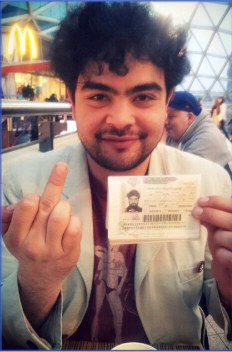
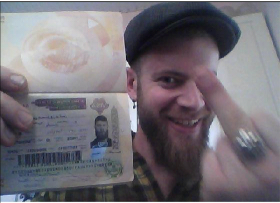
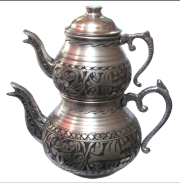
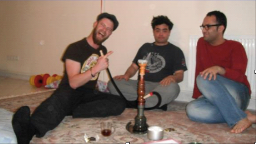
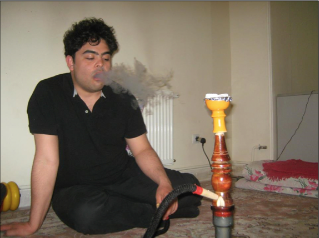
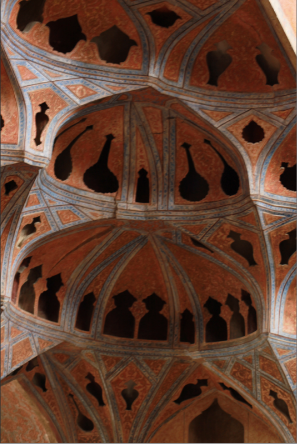

Tere!
Olen Eestist ja väga meeldis lugeda mis sa kirjutasid Iraani kohta. Väga huvitavad seiklused on sul. Ootan juba, et veel lugeda 🙂 Edu rännakutel!
Really enjoyed this article post.Thanks Again. Really Great.